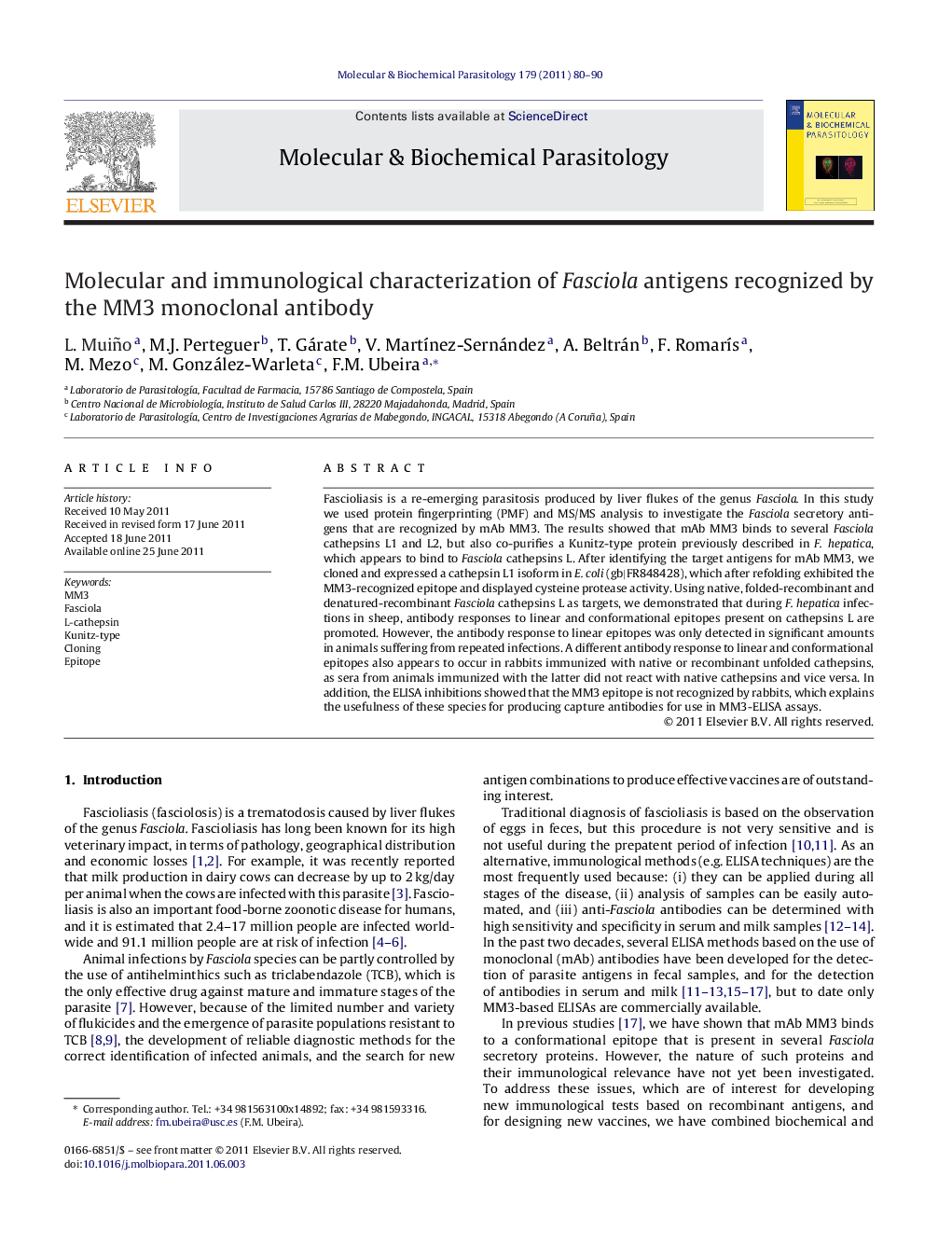| کد مقاله | کد نشریه | سال انتشار | مقاله انگلیسی | نسخه تمام متن |
|---|---|---|---|---|
| 5915659 | 1163319 | 2011 | 11 صفحه PDF | دانلود رایگان |

Fascioliasis is a re-emerging parasitosis produced by liver flukes of the genus Fasciola. In this study we used protein fingerprinting (PMF) and MS/MS analysis to investigate the Fasciola secretory antigens that are recognized by mAb MM3. The results showed that mAb MM3 binds to several Fasciola cathepsins L1 and L2, but also co-purifies a Kunitz-type protein previously described in F. hepatica, which appears to bind to Fasciola cathepsins L. After identifying the target antigens for mAb MM3, we cloned and expressed a cathepsin L1 isoform in E. coli (gb|FR848428), which after refolding exhibited the MM3-recognized epitope and displayed cysteine protease activity. Using native, folded-recombinant and denatured-recombinant Fasciola cathepsins L as targets, we demonstrated that during F. hepatica infections in sheep, antibody responses to linear and conformational epitopes present on cathepsins L are promoted. However, the antibody response to linear epitopes was only detected in significant amounts in animals suffering from repeated infections. A different antibody response to linear and conformational epitopes also appears to occur in rabbits immunized with native or recombinant unfolded cathepsins, as sera from animals immunized with the latter did not react with native cathepsins and vice versa. In addition, the ELISA inhibitions showed that the MM3 epitope is not recognized by rabbits, which explains the usefulness of these species for producing capture antibodies for use in MM3-ELISA assays.
- mAb MM3 binds to a conformational epitope on several clades of Fasciola L-cathepsins.
- We revealed that a Fasciola Kunitz-type trypsin inhibitor binds to L-cathepsins.
- A new cathepsin L1 of Fasciola hepatica was cloned, expressed and functionally folded.
- Linear and conformational epitopes on L-cathepsins are differentially recognized during fasciolosis.
Journal: Molecular and Biochemical Parasitology - Volume 179, Issue 2, October 2011, Pages 80-90